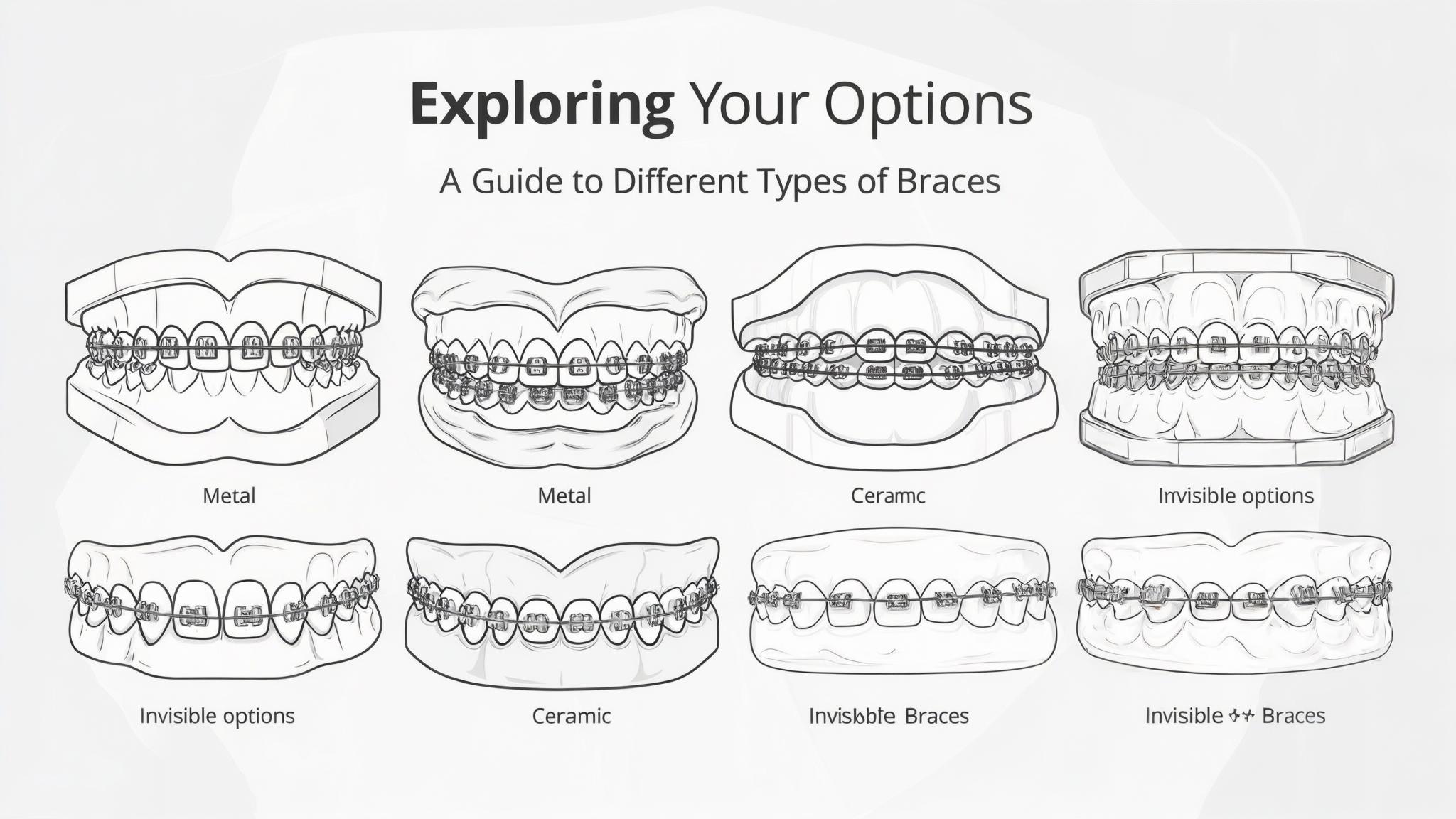Understanding Orthodontics: A Path to a Better Smile
Orthodontics is a specialized field of dentistry focused on diagnosing, preventing, and correcting misaligned teeth and jaws. Orthodontic treatment is crucial not only for achieving a beautiful smile but also for improving oral health, as it can prevent problems like tooth decay and gum disease. This article aims to explore the various types of braces available, helping you understand which option might be the best fit for your needs.
Understanding Orthodontic Appliances
Orthodontic appliances, commonly known as braces, are tools used by orthodontists to align teeth and correct bite issues. These appliances apply gentle pressure over time to move teeth into the desired position. Braces are essential for correcting misalignments, which can lead to improved function and aesthetics of your teeth.
Types of Braces
Metal Braces
Metal braces are the most traditional form of orthodontic treatment. They consist of metal brackets adhered to the teeth and connected by a wire.
Advantages:
- Durability: Metal braces are incredibly robust and can withstand most types of orthodontic pressure.
- Effectiveness for complex cases: They are highly effective for treating severe misalignments and bite issues.
- Cost-effectiveness: Generally, metal braces are the most affordable option.
Disadvantages:
- Aesthetic concerns: Their metallic appearance is noticeable, which some patients find unappealing.
- Discomfort during adjustments: Regular tightening can cause temporary discomfort.
Ceramic Braces
Ceramic braces function similarly to metal braces but use clear or tooth-colored brackets, making them less noticeable.
Advantages:
- Aesthetic appeal: They blend with the natural color of your teeth, offering a more discreet option.
- Less noticeable than metal braces: Ideal for those concerned about the visibility of braces.
Disadvantages:
- Cost: Ceramic braces are typically more expensive than metal ones.
- Potential for staining: The brackets can stain if not properly cared for.
- Fragility: They are more brittle than metal braces and may break more easily.
Lingual Braces
Lingual braces are similar to traditional braces but are placed on the inside of the teeth, making them invisible from the outside.
Advantages:
- Completely hidden from view: Perfect for those who want their orthodontic treatment to be invisible.
- Effective for all types of cases: They can treat complex dental issues effectively.
Disadvantages:
- More challenging to clean: Due to their placement, they require meticulous oral hygiene.
- Discomfort and speech issues: They can irritate the tongue and affect speech initially.
- Higher cost: Lingual braces are often more expensive due to their customized fit.
Clear Aligners (e.g., Invisalign)
Clear aligners are transparent trays that fit snugly over the teeth and are used to correct minor to moderate alignment issues.
Advantages:
- Removable for eating and cleaning: They offer flexibility and convenience.
- Aesthetic appeal: Virtually invisible, making them a popular choice among adults.
- Comfortable fit: Made from smooth plastic, reducing irritation.
Disadvantages:
- Compliance required for effectiveness: Must be worn 20-22 hours per day.
- Limited applicability for complex cases: Not suitable for severe misalignments.
- Cost: They can be more expensive than traditional braces.
Self-Ligating Braces
Self-ligating braces are similar to traditional metal braces but use a specialized clip to hold the wire in place, reducing friction.
Advantages:
- Reduced friction: Can lead to quicker treatment times and less discomfort.
- Fewer appointments needed: Adjustments are often simpler, requiring fewer visits.
- Aesthetic options available: Clear brackets are available for a less noticeable appearance.
Disadvantages:
- Cost: They may be more expensive than traditional braces.
- Availability of specific brands: Limited options may be available depending on your location.
Factors Influencing Choice of Braces
When deciding on the type of braces, several factors come into play:
- Severity of orthodontic issues: More complex cases may require traditional metal or lingual braces.
- Age of the patient: Younger patients might prefer more durable options, while adults may opt for aesthetic choices.
- Lifestyle and personal preferences: Consider how visible you want your braces to be and your daily routine.
- Budget considerations: Different types of braces vary in cost, so it's essential to consider your financial situation.
Conclusion
In summary, there are several types of braces available, each with its own set of benefits and drawbacks. It's crucial to consult with an orthodontist to determine the best option for your specific needs. Remember, the right choice can lead to a healthier, more beautiful smile.
References
For further reading on orthodontics and braces, consider visiting:

